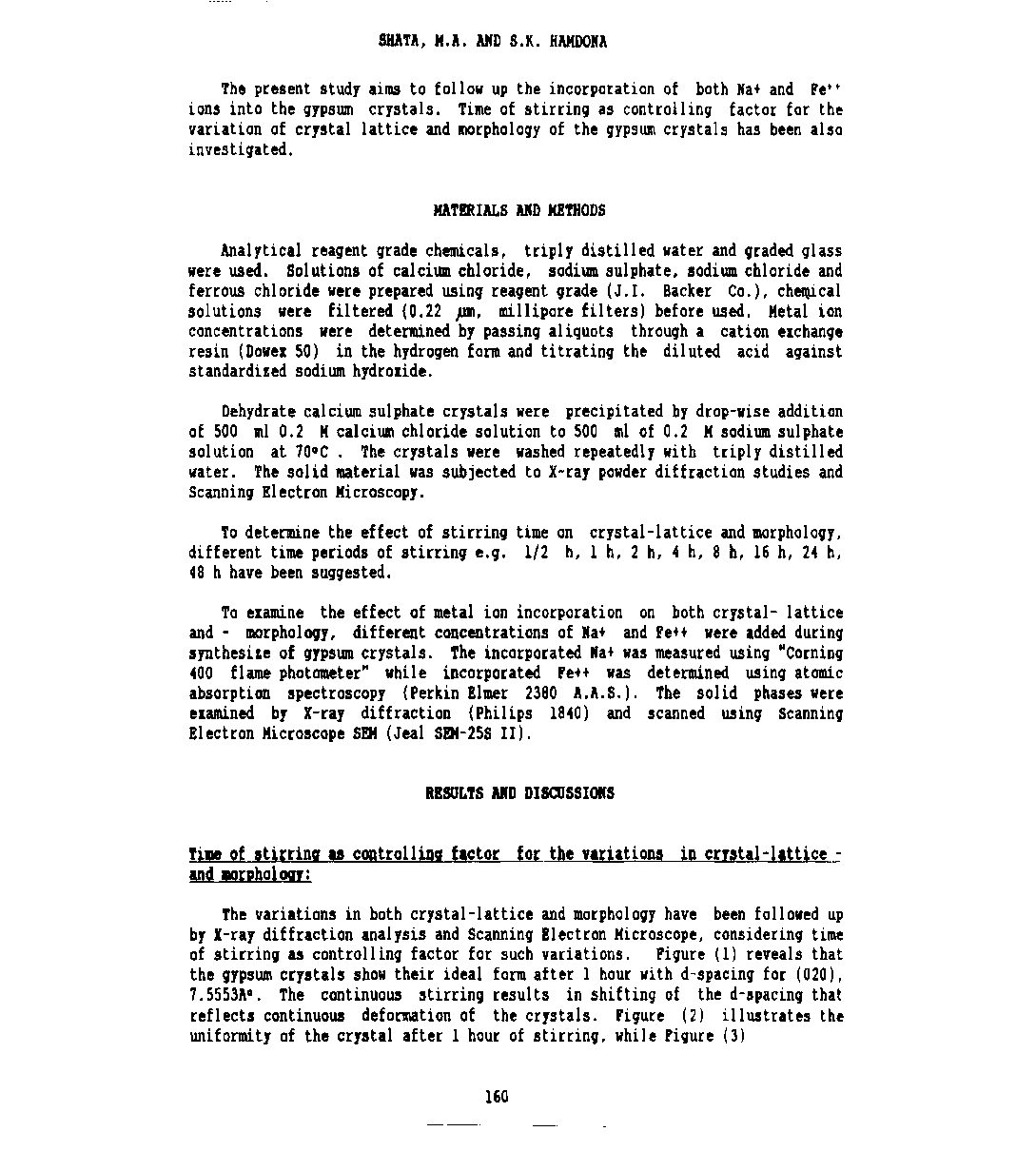Categories
vol-19The present study aims to follow up the incorporation of both Na+ and Fe··
ions into the gypsum crystals. Time of stirring as controlling factor for the
variation of crystal lattice and morphology of the gypsum crystals has been also
investigated.
MATERIALS AID METHODS
Analytical reagent grade chemicals, triply distilled water and graded glass
were used. Solutions of calcium chloride, sodium sulphate, sodium chloride and
ferrous chloride were prepared using reagent grade (J.I. Backer Co.), ch~cal
solutions were filtered (0.22 }UR, millipore filters) before used. Metal ion
concentrations were determined by passing aliquots through a cation elchange
resin (Dowel 50) in the hydrogen form and titrating the diluted acid against
standardized sodium hydrolide.
Dehydrate calcium sulphate crystals were precipitated by drop-wise addition
of 500 ml 0.2 Kcalcium chloride solution to 500 ml of 0.2 Msodium sulphate
solution at 70°C. The crystals were washed repeatedly with triply distilled
water. The solid material was subjected to X-ray powder diffraction studies and
Scanning Electron Microscopy.
To determine the effect of stirring time on crystal-lattice and morphology,
different time periods of stirring e.g. 1/2 h, 1 h, 2 h, 4 h, 8 h, 16 h, 24 h,
48 h have been suggested.
To elamine the effect of metal ion incorporation on both crystal- lattice
and – morphology, different concentrations of la+ and Fe++ were added during
synthesize of gypsum crystals. The incorporated Na+ was measured using “Corning
400 flame photometer” while incorporated Fe++ was determined using atomic
absorption spectroscopy (Perkin Elmer 2380 A.A.S.). The solid phases were
elamined by X-ray diffraction (Philips 1840) and scanned using Scanning
Electron Microscope SEM (Jeal SEM-25S II).







